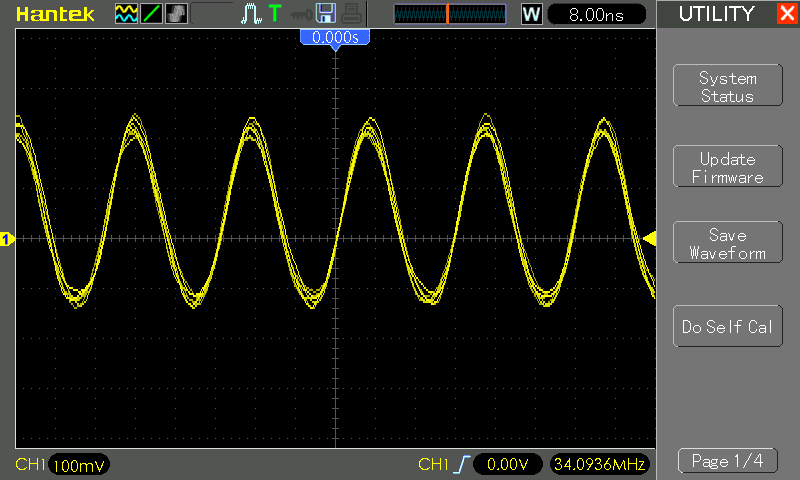LEAP#196 Driving a 7-segment display with CD4026 Counter
Here's yet another way to drive a 7-segment single-digit display unit - using a CD4026.
The CD4026 is a 5-stage Johnson decade counter with decoded 7-segment display outputs and display enable. With RESET
and CLOCK INHIBIT low, and DISPLAY ENABLE IN high, the 7-segment display outputs progress through the 0-9 sequence on
the rising edge of the CLOCK pulse.
It's an interesting alternative to a shift register for driving a 7-segment LED (as in the ShiftDrive
project). While a latched shift register provides random addressing and clean transitions to any digit, it requires
the 7-segment display outputs to be decoded externally (like in code). On the other hand, the CD4026 takes care of the
decoding, and external circuits just need to send a counter pulse.
As always, all notes, schematics
and code are in the Little Arduino Projects repo on GitHub.
read more and comment..
LEAP#195 Coil Resonance and Inductor Testing
I've been trying to do some RF experiments, but instead being driven mad by hand-wound coils that never seem to behave
as the standard coil inductance calculations would
lead us to believe.
As always, it's w2aew to the rescue with a neat deconstruction
and demo of a circuit for coil or inductor measurement.
I built the circuit out, and was easily measuring down to 10µH on a breadboard, and sub-1µH once I put the circuit on a
hacked up copper board with islands. Using the LC circuit resonant
frequency formula, it's possible to work backwards from known frequency and capacitance to determine the inductance
(wolframalpha is
great for this).
So now I hope to get back into some RF without the nagging doubt of not really knowing what my coils are doing!
As always, all notes,
schematics and code are in the Little Arduino Projects repo on GitHub.
Here's a beautiful trace of a (nominally) 10µH choke with a 150pF capacitor. I measure the frequency at 4.26MHz,
therefore an actual inductance of 9.3µH .. pretty close!
Even with a super-bodgy 4.5 turn coil whipped up on the spot and put in parallel with a 30pF capacitor, I'm still getting a decent oscillation at 34.09MHz for a calculated inductance of 0.73µH
And here's the board delivering the results:
read more and comment..
LEAP#194 DIY ESP8266 DevBoard
With the funding of the MicroPython on the
ESP8266 campaign, my interest in the ESP8266 is rekindled!
I have an ESP-01 module lying around, but I'm a bit tired of wiring it up a breadboard again. So here is a little
"devboard" I whipped up on a 4x6cm protoboard and hot-glued to a business card holder.
Now it's plug'n'play - add power and plug in a USB serial adapter and I'm good to go.
As always, all notes,
schematics and code are in the Little Arduino Projects repo on GitHub.
read more and comment..
LEAP#193 PoV LED Shake Stick
This AT89S52-based "shake stick" kit pops up all over the place for a few dollars. I built it and hey, it works
great!
But it's not packaged to be easily re-programmed for other messages or graphics. So started my sleuthing.. which turned
into a fascinating story.
It seems the kit was originally designed and built as a uni project by Zheng Zhong Xing 兴向荣 (aka zhengzhongxing39)
studying Control Technology and Instruments/Principles and Applications at a Chinese University. Reportedly "...
soldering was troublesome, with lots of changes and no solid basic skills, so burned out the first board" ;-) But it
seems persistence paid off, and ended up commercialising the kit and starting electronics business and taobao store
where you can find this kit and many others.
As always, all
notes, schematics and code are in the Little Arduino Projects repo on GitHub, including my annotation of the source
code and schematic for the shake stick.
read more and comment..






